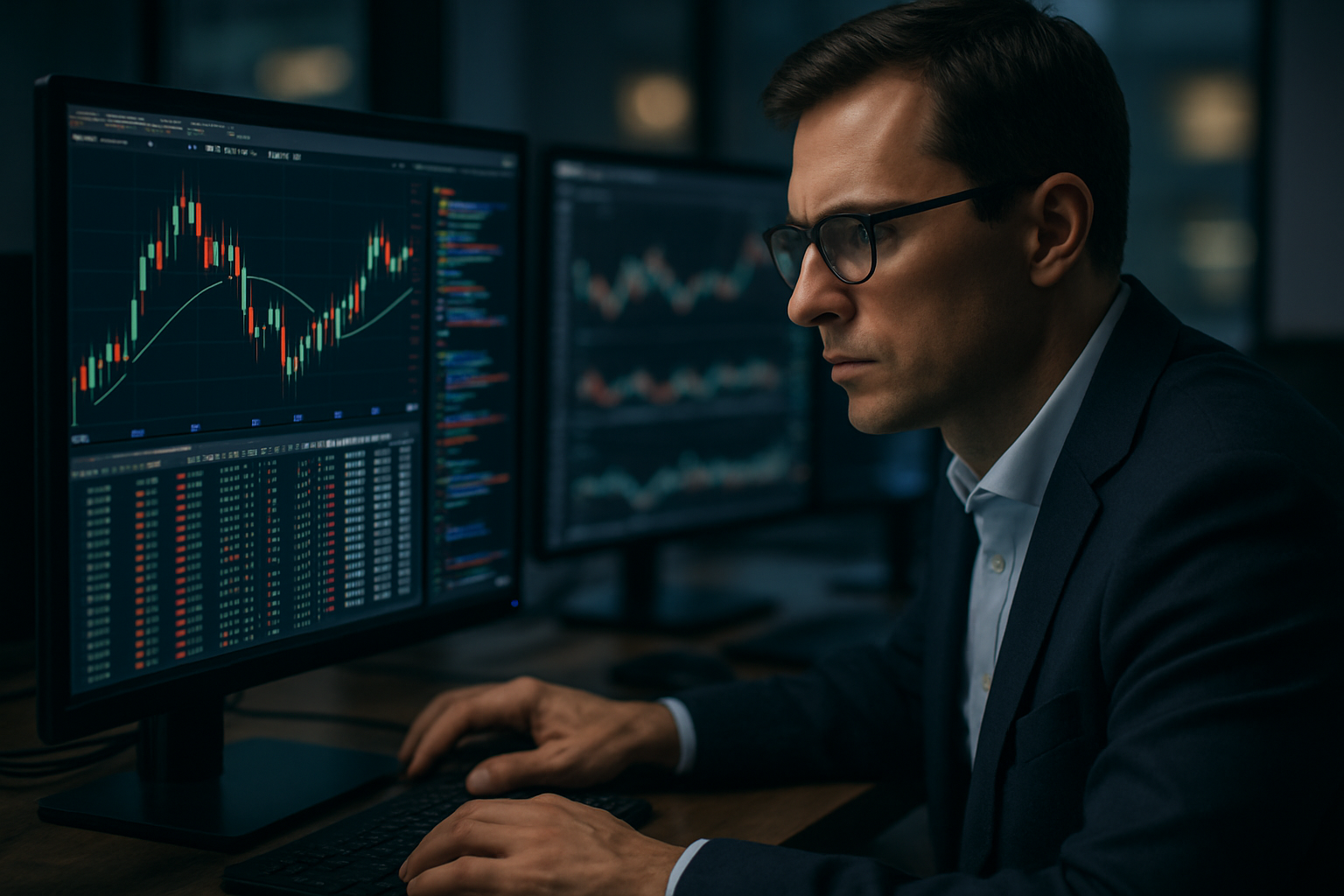Algorithmic Trading: Unraveling the Complexity of High-Frequency Finance
In the fast-paced world of modern finance, algorithmic trading has emerged as a powerful force, reshaping the landscape of financial markets. This sophisticated approach to trading leverages complex mathematical models and high-speed computer systems to execute trades at lightning-fast speeds, often making decisions in microseconds. As we delve into the intricacies of algorithmic trading, we'll explore its evolution, impact on market dynamics, and the challenges it presents for both institutional and retail investors.

The Genesis of Algorithmic Trading
Algorithmic trading, often abbreviated as algo-trading, traces its roots back to the 1970s when computerized trading systems first appeared on financial exchanges. However, it wasn’t until the 1980s and 1990s that algorithmic trading began to gain significant traction. The advent of electronic communication networks (ECNs) and improvements in computing power set the stage for the rapid expansion of this trading method.
In its early days, algorithmic trading was primarily used for simple tasks such as breaking large orders into smaller ones to minimize market impact. As technology advanced, so did the sophistication of trading algorithms. By the early 2000s, high-frequency trading (HFT) – a subset of algorithmic trading characterized by extremely high speed and turnover rates – began to dominate market volumes.
The Mechanics Behind the Magic
At its core, algorithmic trading relies on complex mathematical models and computer programs to analyze market data and execute trades based on predefined criteria. These algorithms can process vast amounts of information in milliseconds, identifying patterns and opportunities that would be impossible for human traders to detect in real-time.
Some common strategies employed in algorithmic trading include:
-
Statistical arbitrage: Exploiting pricing inefficiencies between related securities
-
Market making: Continuously buying and selling a security to provide liquidity
-
Trend following: Identifying and capitalizing on market trends
-
Mean reversion: Betting on the tendency of asset prices to return to their average
The sophistication of these algorithms has grown exponentially, with some incorporating machine learning and artificial intelligence to adapt to changing market conditions.
Impact on Market Dynamics
The proliferation of algorithmic trading has fundamentally altered the dynamics of financial markets. On one hand, it has increased market liquidity and efficiency, narrowing bid-ask spreads and reducing transaction costs for all market participants. Algorithmic trading has also improved price discovery, making markets more responsive to new information.
However, the dominance of algo-trading has not been without controversy. Critics argue that it has led to increased market volatility and unfair advantages for large institutions with access to sophisticated trading technology. The May 2010 Flash Crash, where US stock indices plummeted and rebounded within minutes, highlighted the potential risks of algorithmic trading gone awry.
Regulatory Challenges and Responses
The rapid evolution of algorithmic trading has presented significant challenges for regulators struggling to keep pace with technological advancements. In response to concerns about market stability and fairness, regulatory bodies worldwide have implemented various measures:
-
Circuit breakers to halt trading during extreme market movements
-
Requirements for algorithmic traders to register and disclose their strategies
-
Stress tests to ensure trading systems can withstand market shocks
-
Limits on order-to-trade ratios to prevent excessive order cancellations
Despite these efforts, the regulatory landscape remains complex and fragmented, with ongoing debates about the most effective ways to oversee algorithmic trading activities.
The Future of Algorithmic Trading
As technology continues to advance, the future of algorithmic trading looks both exciting and uncertain. Emerging trends include:
-
Increased use of artificial intelligence and machine learning
-
Integration of alternative data sources for more sophisticated analysis
-
Expansion into new asset classes and markets
-
Growing focus on risk management and compliance
For individual investors, understanding the implications of algorithmic trading is crucial for navigating modern financial markets. While direct participation in high-frequency trading may be out of reach for most, awareness of its impact can inform investment strategies and expectations.
Key Insights for Investors
-
Understand market microstructure: Familiarize yourself with how algorithmic trading affects market liquidity and price movements
-
Be cautious during volatile periods: Algorithmic trading can exacerbate market swings, so be prepared for increased volatility
-
Focus on long-term strategies: Short-term trading becomes increasingly challenging in algo-dominated markets
-
Consider the role of technology: Evaluate how fintech tools and robo-advisors leverage algorithms to enhance investment decisions
-
Stay informed about regulatory developments: Keep abreast of new rules and regulations that may impact algorithmic trading practices
As algorithmic trading continues to evolve, it remains a double-edged sword in the world of finance. While it has undoubtedly brought increased efficiency and liquidity to markets, it has also introduced new risks and challenges. For investors and financial professionals alike, staying informed about the latest developments in this field is essential for navigating the complex landscape of modern financial markets. By understanding the mechanics and implications of algorithmic trading, we can better adapt to the rapidly changing world of finance and make more informed investment decisions in the years to come.





